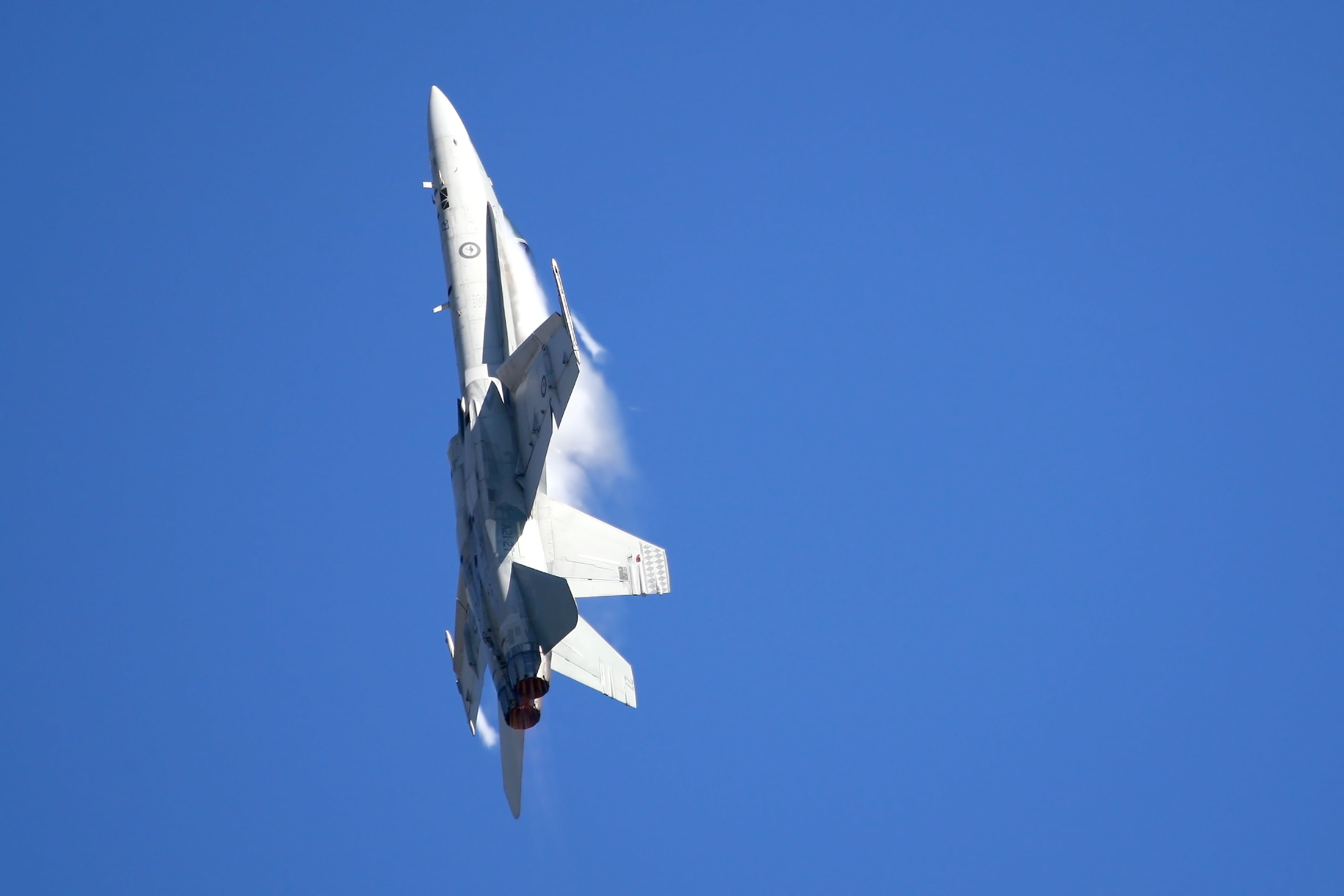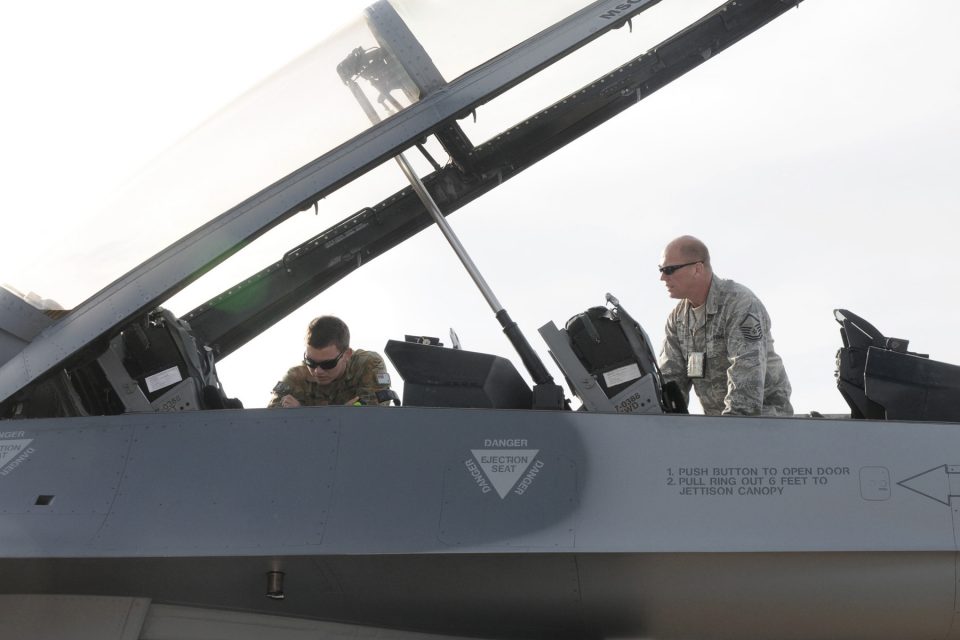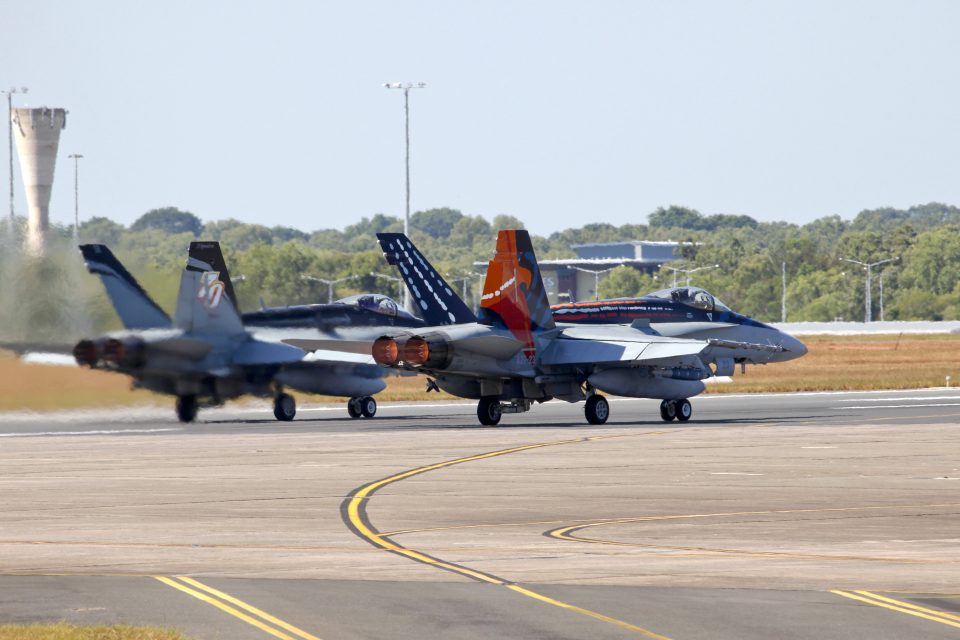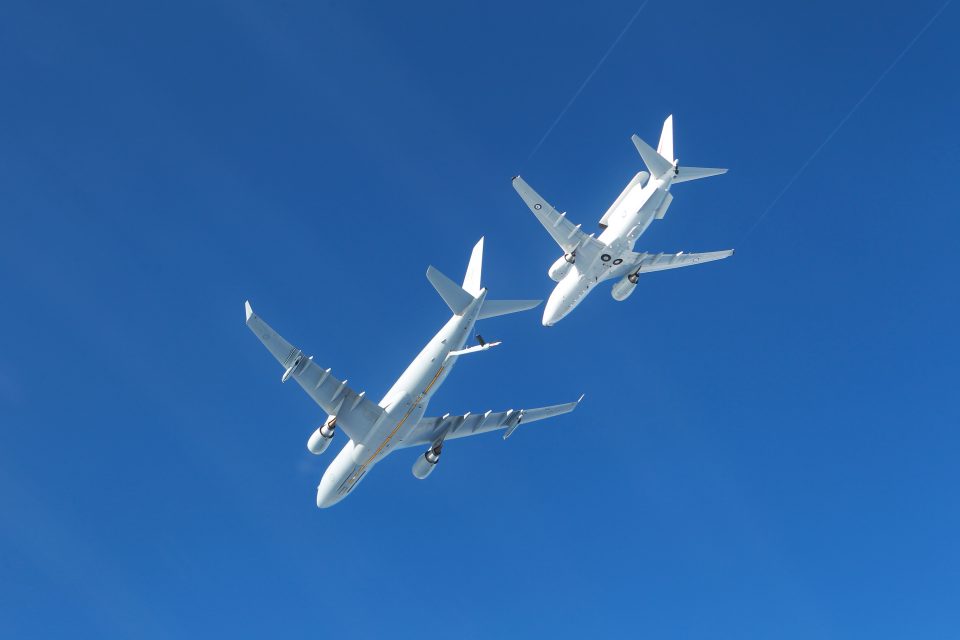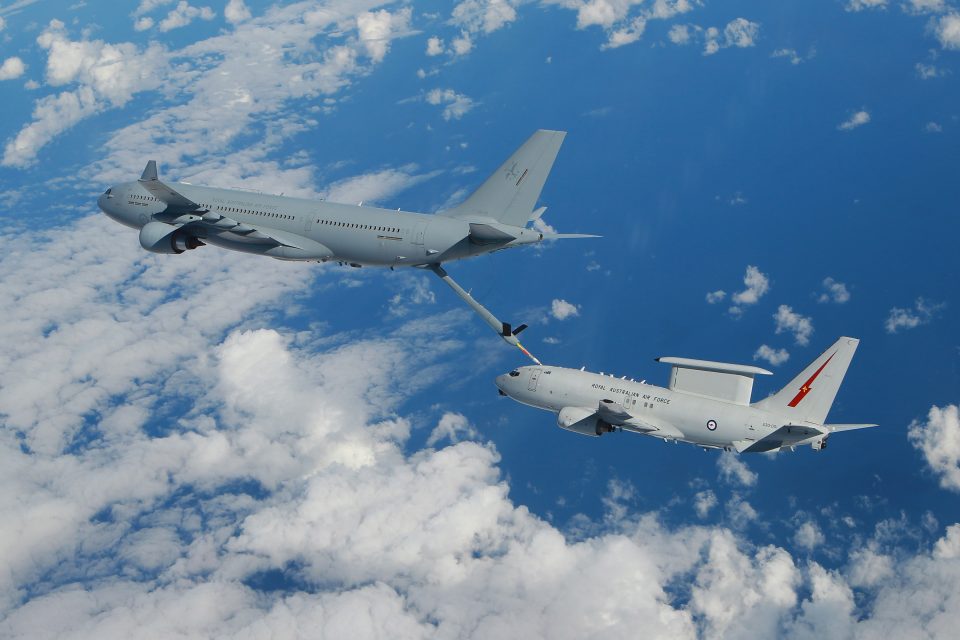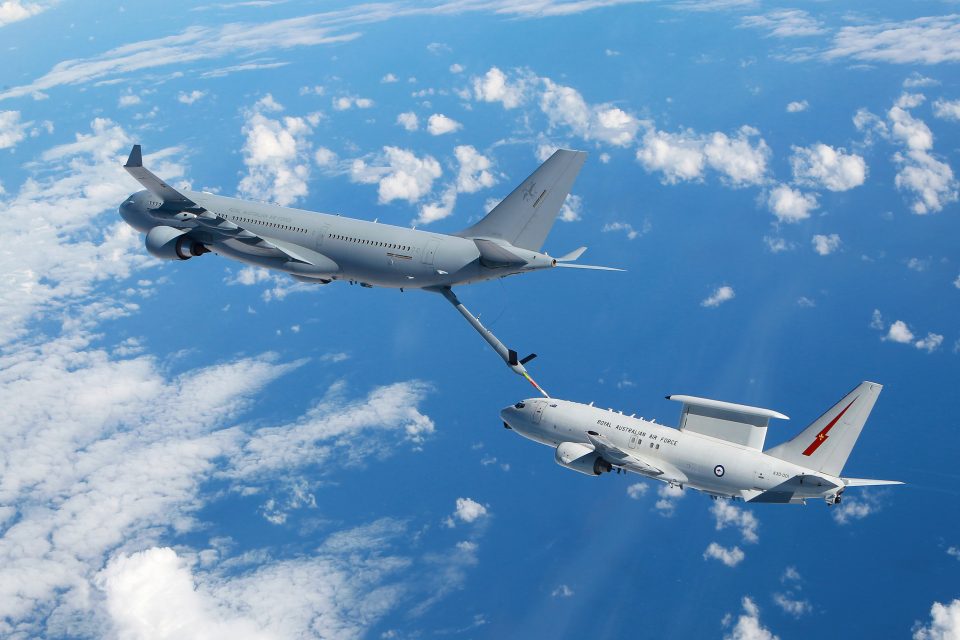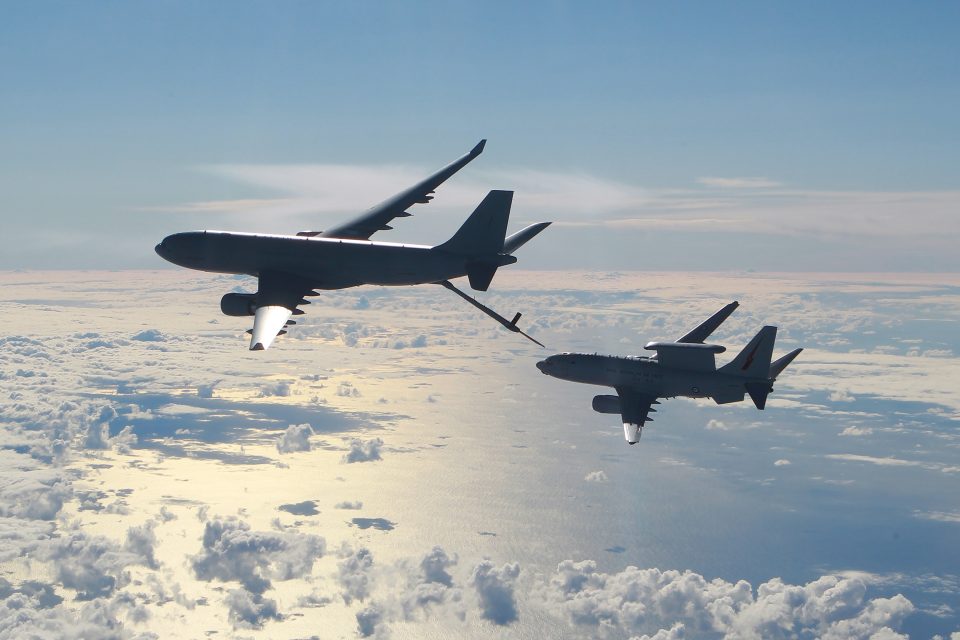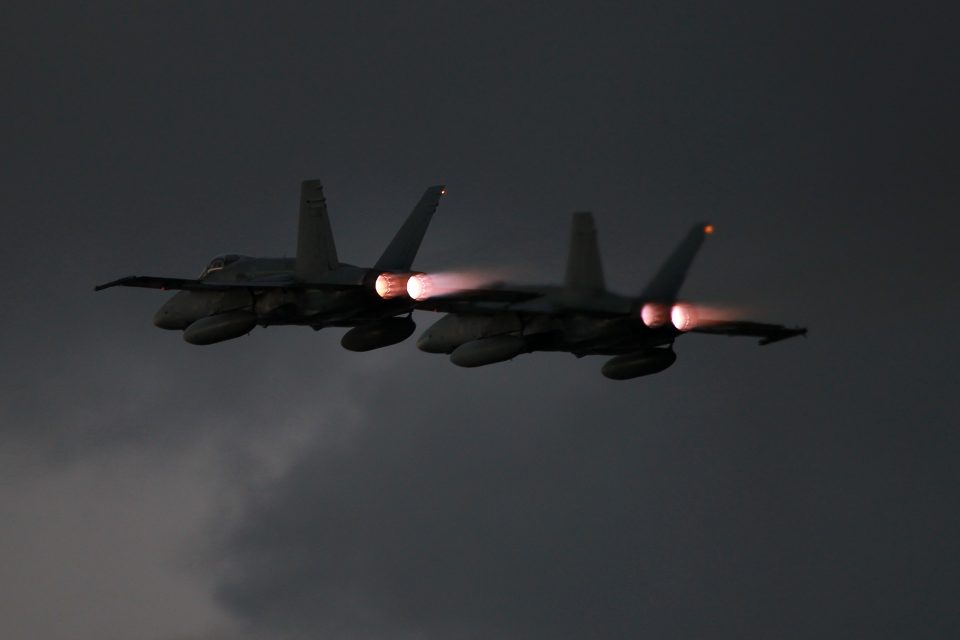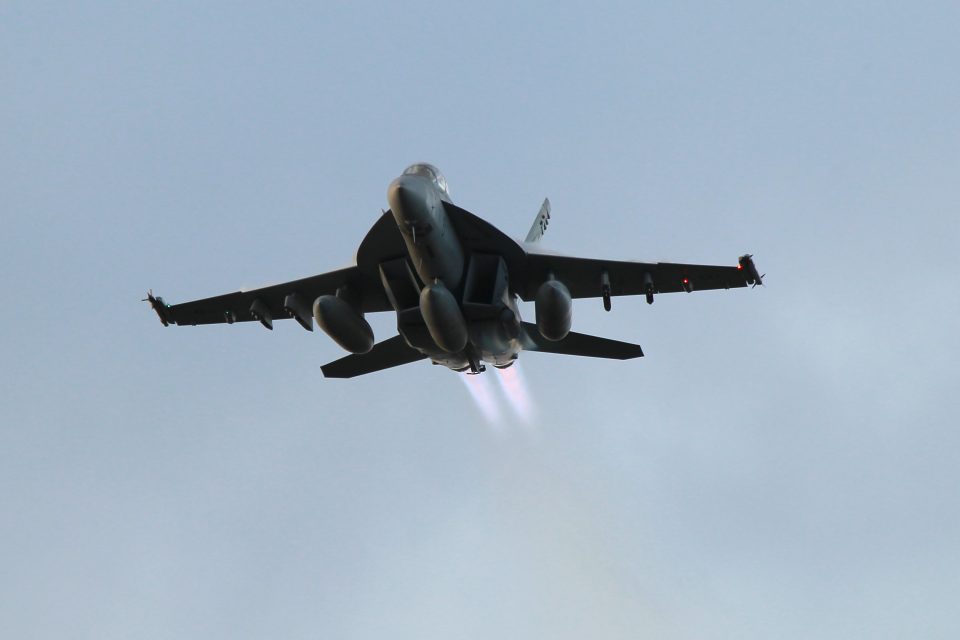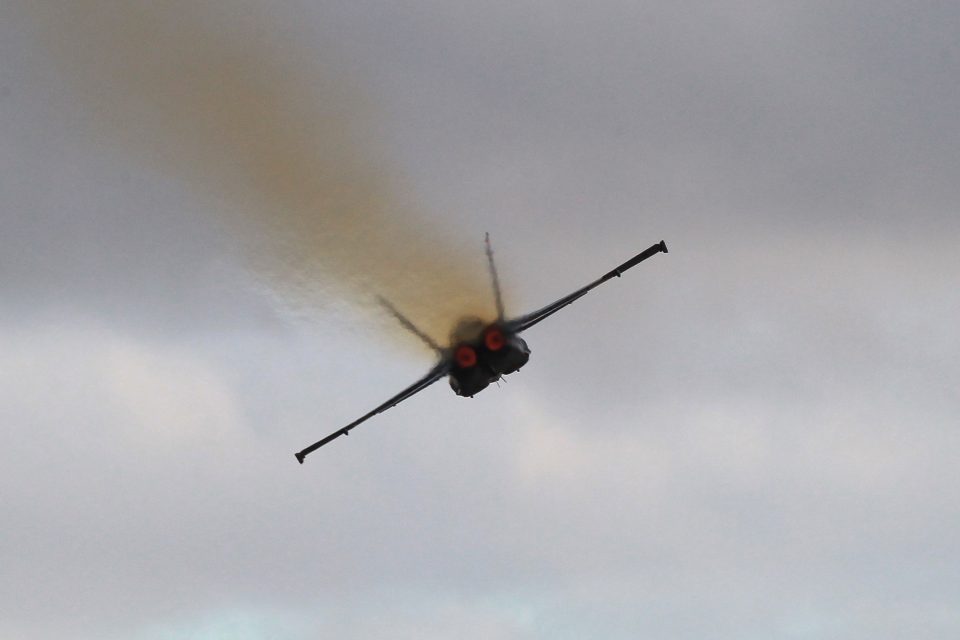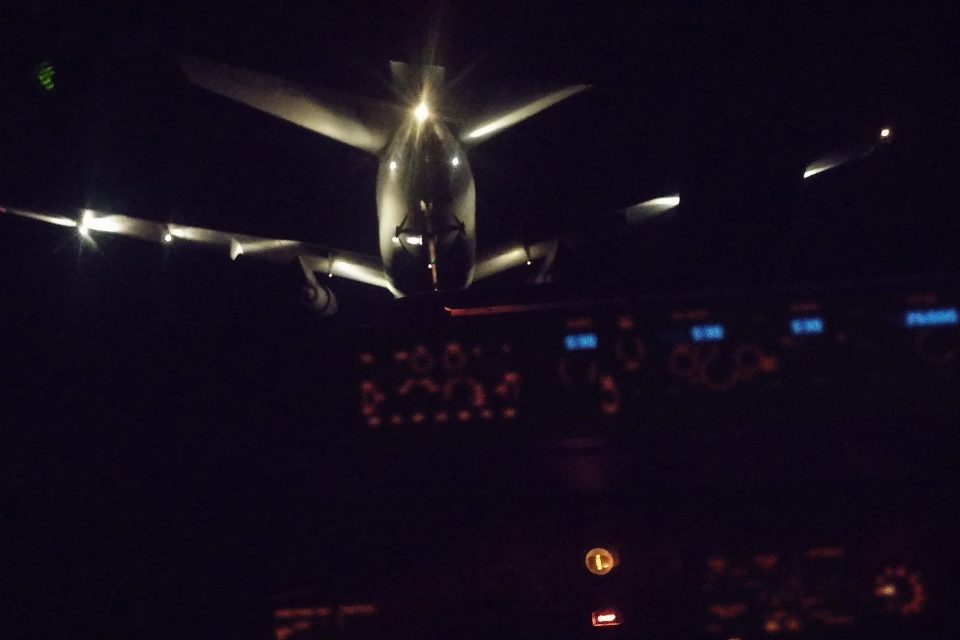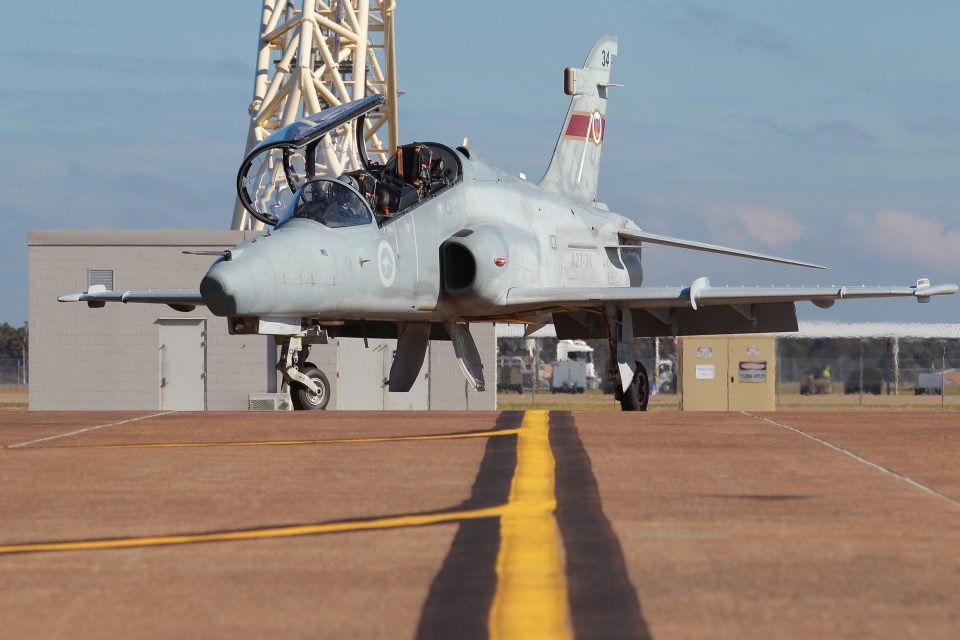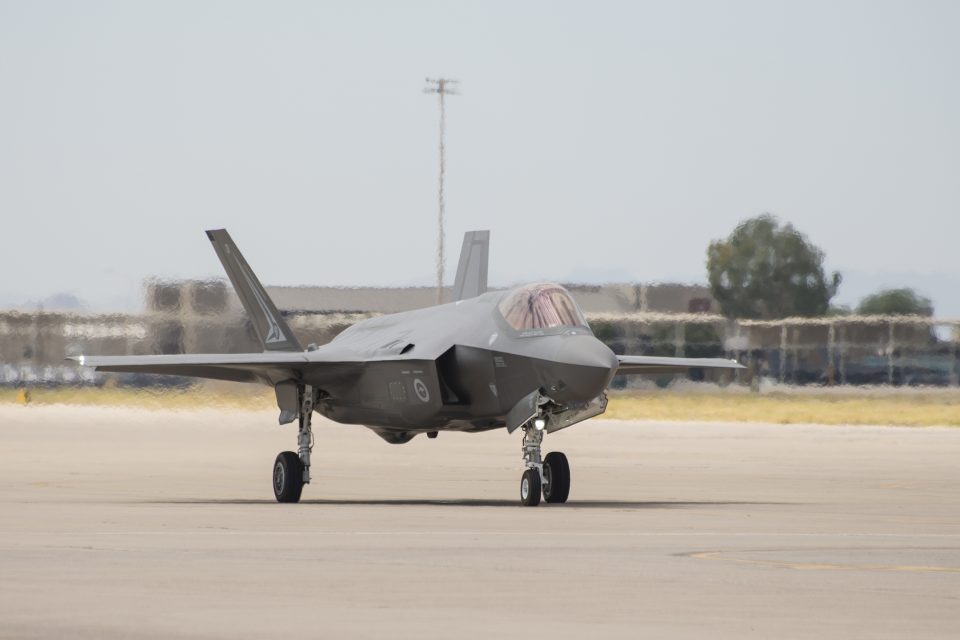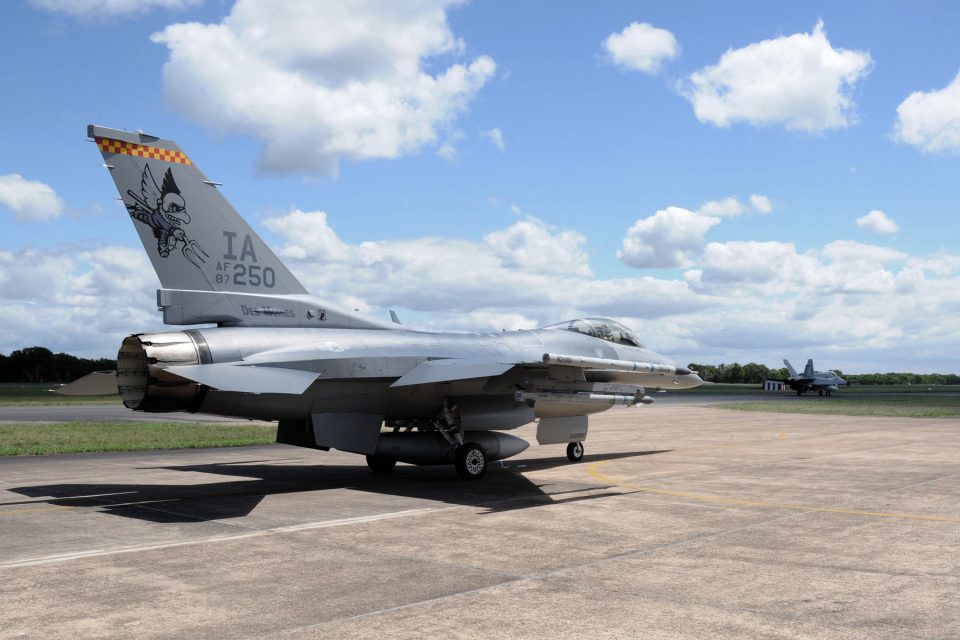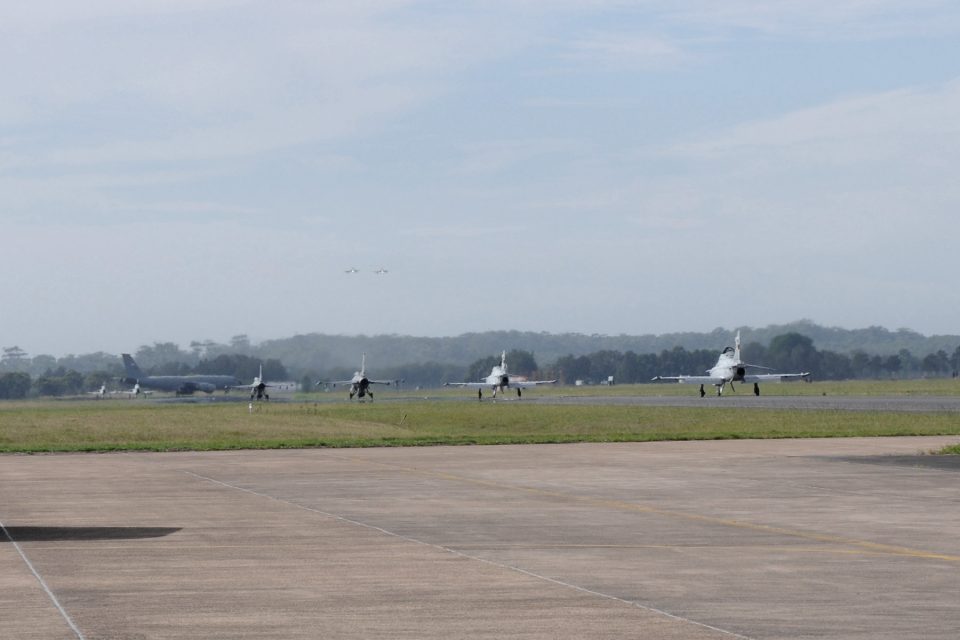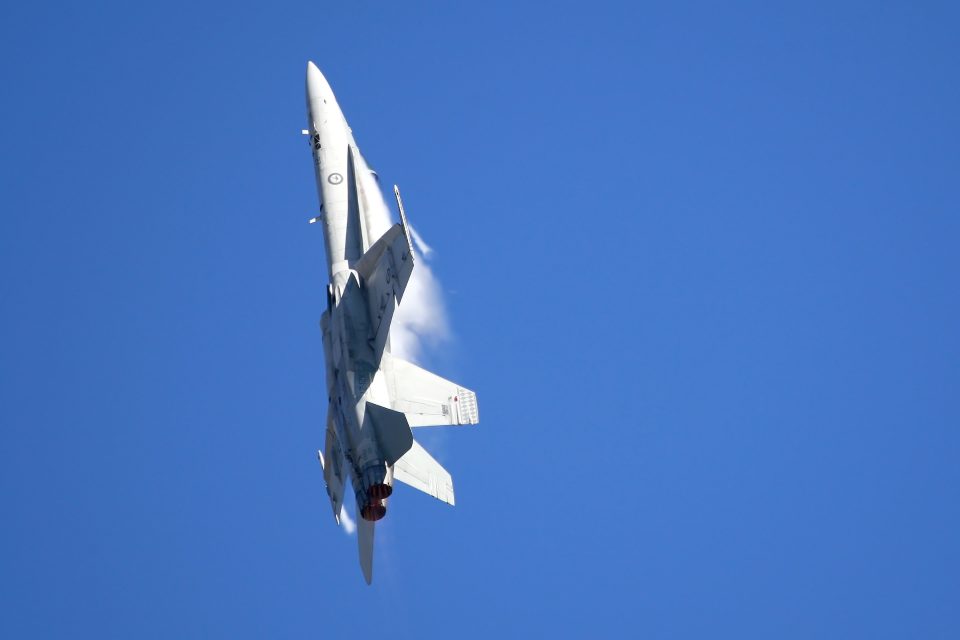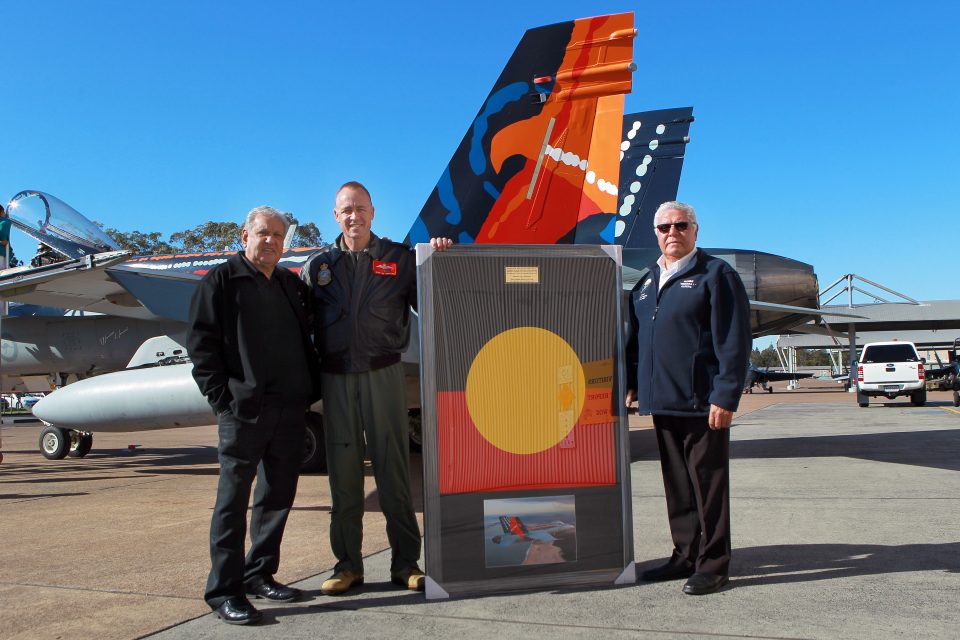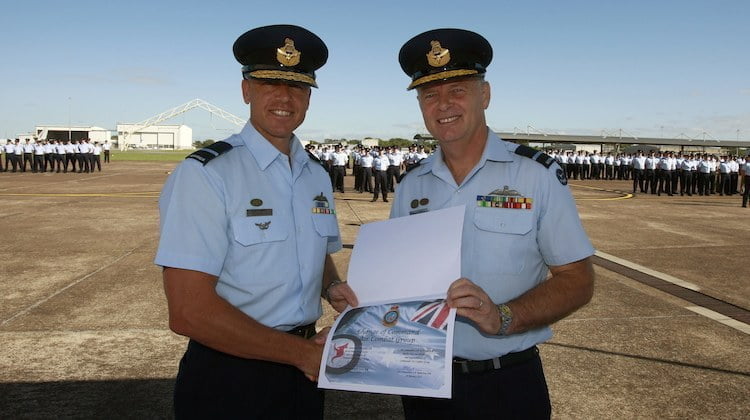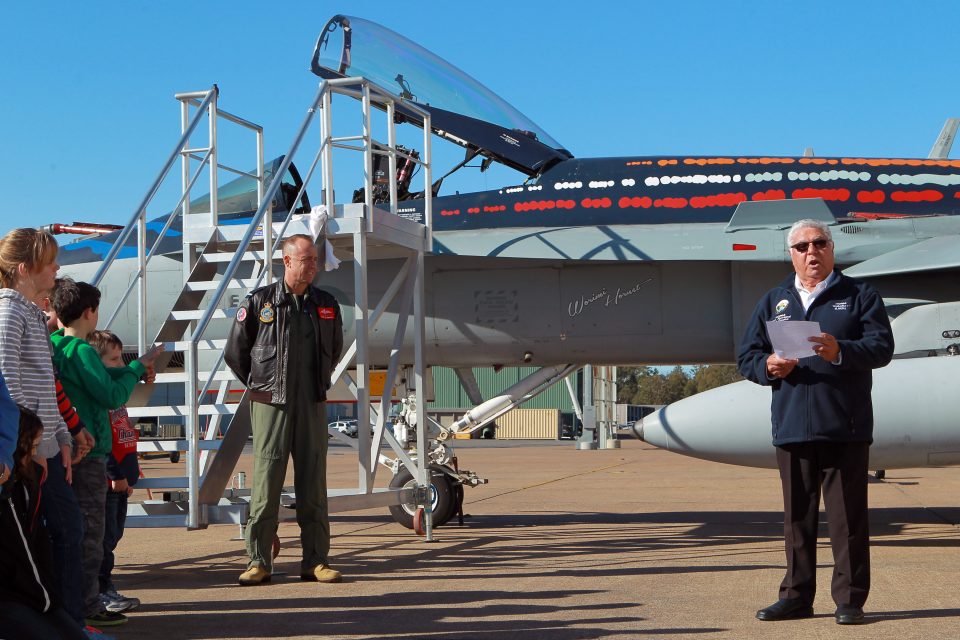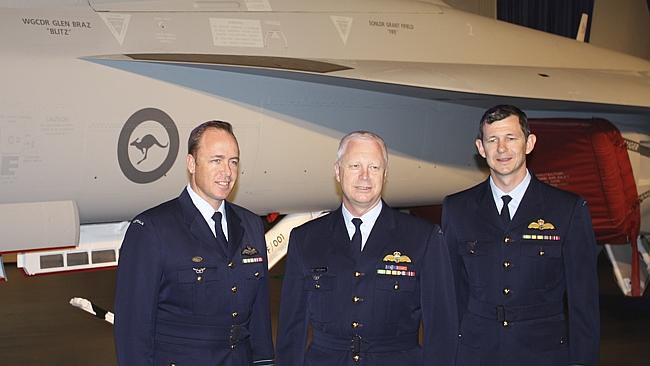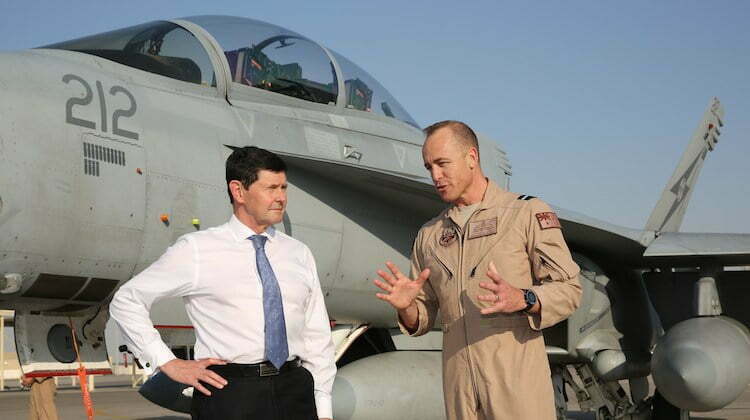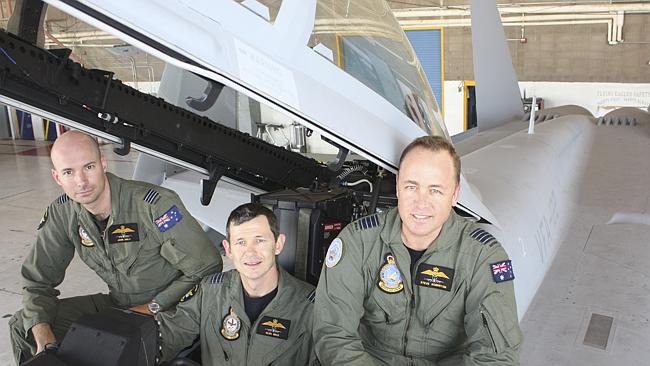2015-09-22 By Robbin Laird
During my visit to Australia in August 2015, I had a chance to talk with an experienced fighter pilot and squadron commander, and now commander of Air Combat Group about his time in Operation Okra and the way ahead for the Royal Australian Air Force (RAAF).
Air Commodore Steven P. Roberton is Commander of Air Combat Group (ACG), responsible for force generation and command of Australia’s air combat operations. ACG comprises the three wings encompassing Hawk Lead-In Fighter training and maintenance training; F/A-18A/B ‘Classic Hornet’ training and operations; and F/A-18F ‘Super Hornet’ operations; and Joint Terminal Attack Controllers and Combat Controllers.
Air Commodore Roberton led the transition team that brought the Super Hornet into the RAAF which declared its IOC in 2012.
This is the first combat aircraft which the RAAF has flown with an AESA radar, and the size and two man crew have provided important benefits for the RAAF as well which Air Marshal (Retired) Brown discusses in his interview.
Question: Operation Okra is the first time that the RAAF took an integrated lift-tanker-reconnaissance and strike package to a long distance operation.
You were the initial Commander of the Australian Air Task Group 630 in the Middle East in September 2014 and what has been the impact of your ability to self-deploy?
Air Commodore Roberton: This would be the first time ever that we’ve been able to self-deploy. We were able to do that well inside our normal preparedness timelines., simply because we weren’t having to rely on that critical tanker resource that the US would normally provide.
From the government saying go, we were ready for combat ops in 12 days.
We’ve never been able to do that before
The bigger issue with theater though was I think there’s yet to be a modern air war of any type where the air component commander sits around and says, “I’ve just got too many tankers.”
Question: The RAAF arrived at the outset and brought its new tanker and what was the impact of both, coming early and bringing your new tanker?
Air Commodore Roberton: By coming early, we were able to play a more important coalition role. And with the tanker, we early on not only established a lead position with regard to the other three nations using the new tanker but also with regard to the non-US side of the tanking force. We became, in effect, the lead coalition nation for tanking with regard to non-US assets.
When we came into theater we were cleared only to tank our Hornets and Super Hornets. But rapidly we were cleared to tank 12 different aircraft from seven different nations, and certainly the USMC and USN became major users.
This meant that we were a net contributor to the operation rather than having to rely on US assets only.
And our tanker crews became highly valued because they were able to listen on the JTAC frequencies and able to anticipate fighter fuel demand and to move closer to where the fighters would then move to get refueled.
The flexibility to anticipate fighter demand – which clearly happened in both the US and Canadian cases – meant the difference between getting weapons away on several occasions or not.
Question: You also introduced the Wedgetail as well as your Super Hornets flying for the first time in combat with the F-22s. How would you describe those experiences?
Air Commodore Roberton: With regard to Wedgetail, it really is a new aircraft with an incredible radar. And as such is clearly something new in the air battle management world, and we experienced US AWACS personnel seeking us out to discuss the Wedgetail and its capabilities as part of their thinking about the future as well.
We have practiced the working relationship between our Super Hornets and the Wedgetail but in the operation we worked out various combinations of how best to work the two aircraft in combat. The sensing capability shared by the two aircraft really allowed us to enhance the lethality of the Super Hornet in the operations. We were able to deliver weapons very rapidly and in late December during the air campaign I was able to authorize seven different weapons releases inside of an hour as they rapidly rolled into the target area.
The Wedgetail was able to handle a very complex combat situation.
There were really three quite separate and distinct conflicts in Syria, Northern Iraq and Central Anbar Province, with a very different shape and feel to them. The ability of the Wedgetail to handle a high volume of information and to shape it into effective decision making packages for three very different air operations going on at the same time was impressive.
For the fighters, the fidelity of the data generated by the Wedgetail was a key to the kind of combat confidence one needs to make decisions in a complex combat environment.
And given the age of the AWACS, there were breakdowns and challenges to keep them operating. The result was that Wedgetail was extended in its operational time on station to fill the gap.
Question: And your F-22 experience?
Air Commodore Roberton: In broad terms they have the fifth generation sensor package which can help provide information you wouldn’t otherwise get from something standing off.
We’ve got great capabilities in Wedgetail, but sometimes you really need a penetrating capability that can use the full spectrum and pass on information closer to the target.
Operating the Super Hornet with the F-22 and then receiving their data allowed us to operate more effectively. Our training with the F-22s in exercises like Red Flag has been crucial not only to prepare ourselves for combat but also to rethink how we operate our own fighter fleet.
We have adapted a lot of our tactics and procedures to do that same sort of leverage that the F22 practices with the Eagle community but clearly at lower levels between our Super Hornet to Hornet. That becomes pretty important for us to get the most out of our classic Hornets.
In other words, we are adapting our concepts of operations anticipating the entry into service of the F-35 and the readjustment of the role of the Super Hornet.
We are preparing ourselves thereby for the transition to the F-35 enabled force. The Super Hornets and Growlers are enhancing our current capabilities, and we can work through how the F-35 will redefine their roles in the evolving force. We know we’ve got a lot to learn.
One problem with how people interpret the F-35 is thinking fifth generation is only about stealth; it is about data fusion and the capability to make the other air combat assets more viable and effective. It is a significant force multiplier, rather than commentators who want to see it as some kind of silver bullet.
Question: Do you have anything else to add about the impact of Operation Okra on the way ahead?
Air Commodore Roberton: As we work to transform the force, we have a combat experienced force.
We have an entire generation of combat hardened crews.
That’s going to position us pretty well for this transition to a next generation air force we’re trying to build, which is centered around the F-35.
We are focusing on a transition in which the force packages are the critical combat enabler.
We really only ever think in packages now.
And we need to get the best information available as fast as possible to the package.
What platform we’ve decided to deliver the final effect, which may or may not be kinetic, is not as important as how we get the most out of the assets that are up there.
More About ACG Commander Roberton:
Air Commodore Roberton is a Category A Fighter Pilot with over 3000 total hours, mostly in F/A-18A, B, C, D, E and F fighters. He entered the Royal Australian Air Force in 1989 as a direct entry pilot trainee having completed a Bachelor of Science degree in Chemistry and Mathematics at the University of Queensland. He graduated from Number 153 Pilots Course in 1990 and F/A-18 conversion in 1993 He flew fighter tours at Number 3 Squadron RAAF Williamtown; an exchange flying F/A-18s with the United States Marine Corps at Beaufort, South Carolina; and at Number 3 Squadron as the A Flight Commander until 2000.
Roberton completed a joint staff tour in Capability Development Group in Canberra and Australian Command and Staff College. He commanded Number 75 Squadron at RAAF Tindal from November 2003 before returning to Canberra to stand up the Air Combat Transition Office and lead the transition to F/A-18F Super Hornet. He commanded Number 82 Wing at RAAF Amberley and then completed the UK’s Higher Command and Staff College in 2012 before returning on promotion as Director General Aerospace Development. He was the initial Commander of the Australian Air Task Group 630 in the Middle East in September 2014 prior to returning to RAAF Williamtown to command Air Combat Group from January 2015.
About Air Combat Group
Air Combat Group commands all the Royal Australian Air Force’s fast-jet combat aircraft to deliver Australia’s capability to control the air and conduct precision strike.
Headquarters Air Combat Group (HQ ACG) commands three operational wings:
- No 78 Wing conducts operational training (ground and air) on the F/A-18B Hornet and Hawk at Nos 76 and 79 Squadrons
- No 81 Wing controls the air with Nos 3, 75 and 77 Squadrons (all F/A-18 Hornet squadrons) and No 2 Operational Conversion Unit
- No 82 Wing strikes designated targets and conducts reconnaissance with Nos 1 and 6 Squadrons (Hornets) and Forward Air Combat Development Unit (PC-9/A)
Air Combat Group is one of the largest Force Element Groups in the Air Force with 145 aircraft, 163 aircrew and 2000 support personnel based across Australia. It is responsible for all of the Air Force ’s F/A-18 Hornet and Hawk squadrons, plus PC-9/A Forward Air Control aircraft. Units that make up Air Combat Group are based at:
- RAAF Base Amberley, near Brisbane, Queensland
- RAAF Base Williamtown, near Newcastle, New South Wales
- RAAF Base Pearce, near Perth, Western Australia
- RAAF Base Tindal, near Katherine, Northern Territory
Air Combat Group was formed in January 2002 by merging the Tactical Fighter Group and Strike Reconnaissance Group. The merger enhanced our ability to deploy combat air power in a prompt, effective and highly integrated manner.
HQ Air Combat Group is at RAAF Base Williamtown.
Since its formation, Air Combat Group squadrons have experienced a level of operational activity not seen in many years. F/A-18 Hornets were deployed to provide air defence as part of Operation Slipper (international coalition against terror) in Diego Garcia and again during Operation Guardian II to protect the Commonwealth Heads of Government Meeting (CHOGM) in south-east Queensland. Air Combat Group personnel, including a F/A-18 Hornet squadron, also deployed to Iraq in 2003 as part of Operation Falconer, providing air defence for high-value assets such as Airborne Early Warning and Control Aircraft, close air support for ground troops and striking enemy targets.
Air Combat Group also maintains a busy training schedule for both air and ground crew on the F/A-18 Hornet and Hawk. Highlights have been providing support to Operation Acolyte (Melbourne Commonwealth Games 2006) and participation in high-end exercises such as Exercise Pitch Black in Australia and Exercise Red Flag in the United States.
The photos in the slideshow highlight aircraft based in Williamtown, or in the case of the KC-30A working with aircraft based at Williamtown.
An F/A-18 Hornet conducts an aerial display over RAAF Base Williamtown in preparation for the Wings over Illawarra Air Show.
F/A-18A Hornets based at RAAF Williamtown, NSW, participate in Exercise Aces North which was conducted in the Northern Territory. Exercise Aces North 2015 is the culmination of Fighter Combat Instructor (FCI) course held at RAAF Base Tindal and Darwin over the period 28 May-25 June 2015.
Exercise Aces North is supported by personnel and assets from Number 1 Squadron and Number 2 Operational Conversion Unit.
Two F/A-18A Hornets take off in formation from RAAF Base Williamtown during Exercise DAWN STRIKE. Dawn Strike represents the final mission of the Fighter Combat Instructor (FCI) Course held at RAAF Base Williamtown.
FCI course was run from 12 January to 26 June 2015 at Number 2 Operational Conversion Unit (2OCU). The aim of FCI course is to graduate expert leaders and instructors capable of tactics development, validation and instruction and is run every two years.
KC-30A MRTT and E-7A Wedgetail conduct Air to Air refueling testing in the airspace near RAAF Williamtown. From 1-13 June 2015, air-to-air refueling (AAR) trials were conducted between a RAAF KC-30A Multi-Role Tanker Transport (MRTT) and an E-7A Wedgetail Airborne Early Warning and Control Aircraft.
A Royal Australian Air Force No. 2 Squadron E-7A Wedgetail airborne early warning and control aircraft completes a night-time air-to-air refuel from a United States military KC-10 Extender Air-to-Air Refueling Tanker Aircraft.
Australian F-35A flying out of Luke Air Force Base, USA (credit Lockheed Martin)
The first squadron of ten F-35B Joint Strike Fighters (JSF) are operational after the United States Marine Corps (USMC) declared Initial Operating Capability (IOC) on 31 July 2015.
RAAF personnel working with JSF will be tapped into an international support network and will have the opportunity to work alongside Defence industry to sustain the JSF fleet.
Australia is scheduled to achieve IOC for its first Squadron of F-35s to be based at Williamtown in 2020.
No 76 Squadron Hawk-127 aircraft return to Squadron lines after conducting an aerial display during the No 76 Squadron Family day at RAAF Base Williamtown.
F-16 C aircraft from the 132nd Fighter Wing (132FW), Des Moines, IA are seen operating from the Williamtown Royal Australian Air Force (RAAF) Base in preparation to launch during a Dissimilar Air Combat Training (DACT) mission at the Williamtown RAAF Base, Australia on February 23, 2011.
The 132FW is seen conducting DACT mission “Sentry Down Under.”
All but the F-16 photos are credited to the Australian Ministry of Defence; the others to the USAF.
The second slideshow focuses on Air Commodore Roberton.
The first two photos highlight the Super Hornet transition.
The third photo shows The Minister for Defence, the Hon Kevin Andrews, MP (left) speaks with Commander Air Task Group, Air Commodore Steve Roberton during a visit to the Middle East Region.
The fourth photo shows outgoing Commander Air Combat Group Air Commodore Anthony Grady, AM, (right) Officially hands over his duties to Air Commodore Steven Roberton, AM by signing the Change of Command certificate.
The fifth photo shows Commander Air Combat Group, Air Commodore Steve ‘Zed’ Roberton listens to an address by Local Worimi Elder Uncle Neville Lilley during a ceremony at RAAF Base Williamtown during NAIDOC Week.
The final photo shows. Commander Air Combat Group, Air Commodore Steve ‘Zed’ Roberton presents a framed Aboriginal flag and Worimi Hornet print to Local Worimi Elders Uncle Neville Lilley (right) and Uncle John Ridgeway during a ceremony for NAIDOC Week at RAAF Base Williamtown.
Plan Jericho Report:
A comprehensive report on the Williams Foundation 6 August seminar, Plan Jericho, Shaping Design-Led Innovation, has been prepared for the Foundation by Dr Robbin Laird.
Dr Laird has been reporting on the RAAF’s Jericho journey since the first Williams ‘5th Gen’ seminar in March 2014, and has been an active and supportive participant in the Williams seminars over the last 18 months.
Dr Laird’s report explores and analyses the themes and issues discussed at the seminar on 6 August as well as presenting an excellent summary of each of the presentations. He has used an episode from the Battle for Britain as a means of ‘setting the scene’ and highlighting the centrality of a concept of operations to provide the framework and foundation for integrating across platforms and enablers.
Dr Laird postulates that without such a conops to support the future 5th generation enabled ADF, our warfighting effectiveness will be sub-optimal.
Dr Laird also conducted a series of interviews with the RAAF’s senior leadership to inform his analysis of the RAAF’s transformation challenges and opportunities.
Interviews with CAF and DCAF, operational and FEG commanders, and the outgoing CAF give this report a unique perspective.
Current operations are reviewed, future challenges embraced, and the Jericho implications for the joint battlespace and Defence Industry are candidly discussed.
http://www.williamsfoundation.org.au/Resources/Documents/LairdPlanJerichoReportSep2015.pdf


